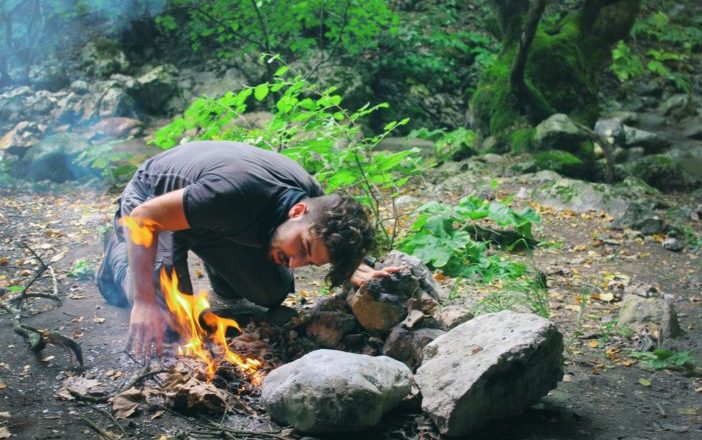Introduction
Some like to spend time in the great outdoors, while others are preparing for a time where the basics are all we will have to rely on. Whatever the case, it is important to know the basic principles of survival, especially if you’re just getting started in outdoor ventures. First and foremost, it is most important to remain calm, no matter what the situation is. When you’re calm, you can think clearer and make more rational decisions. You will also be able to remember these simple outdoor survival tips.
#1: How to Find a Water Source
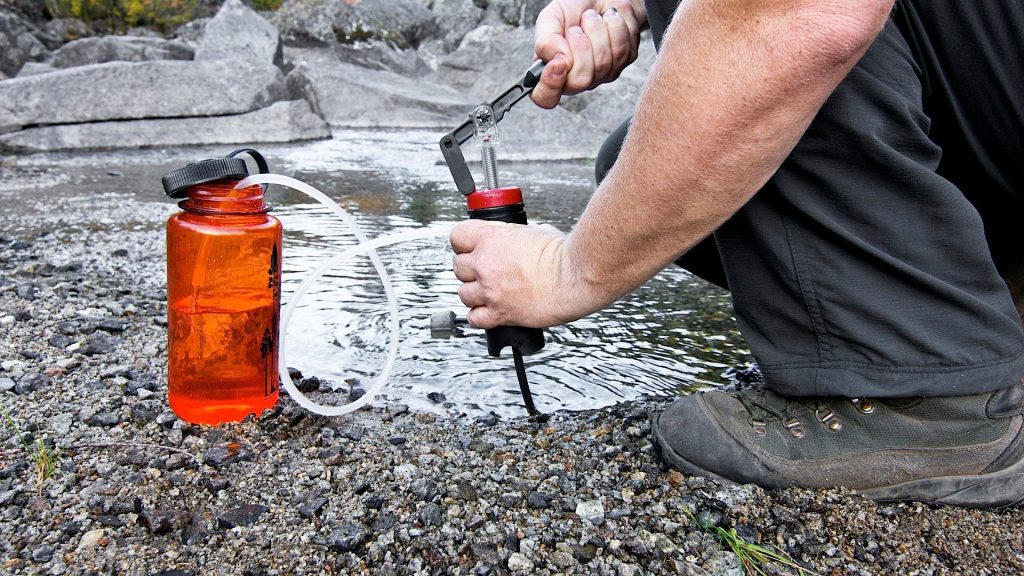
Water is an essential part of life, and no one can live without it. The average person can go about three days without water, and after that, the organs begin to shut down. If you are outdoors and away from civilization, this can be pretty difficult to do, but it can be done. Common ways to gather water when you’re outdoors include:
- Rain: This will be the easiest way to get water. When it rains, collect as much water as you can and store it where you can.
- Snow: If it’s colder, you may have to rely on snow for hydration. The key thing to remember is that you should not eat snow, because this requires your body to use a lot of energy to absorb the water from the snow. You should instead melt it before you drink it, by placing it in a bag and letting the sunlight hit it, or by using your body heat.
- Vegetation: You can use a cloth to soak up the dew from grass and other plants, and then squeeze it into a bottle or a bag.
- Underground water: Find water underground by digging around plants that indicate there is water below (willows, cattails, and cottonwood).
When collecting water from vegetation, the ground, puddles, etc. should be boiled before drinking it. Just in case you absolutely can’t find clean drinking water, then you may benefit from having water purification tablets instead.
#2: How to Find/Create Some Sort of Shelter
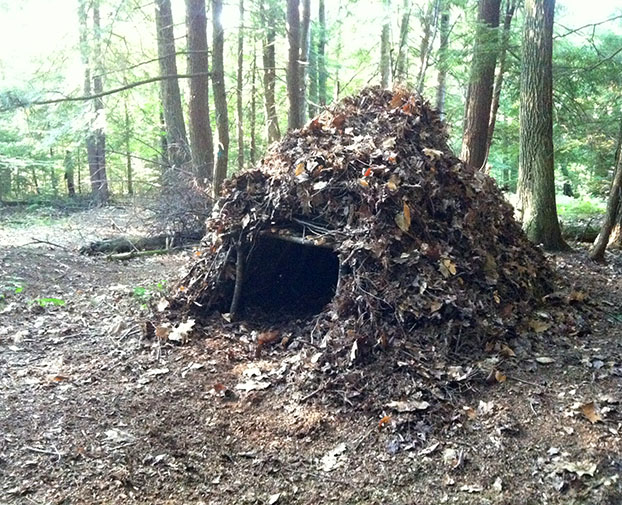
A simple debris shelter can insulate you from the cold and if done properly, conceal your location.
This could also be your first step, especially if the weather is too hot or too cold. The shelter will help protect you from the elements, whether that be rain, snow, heat, etc.— but the type of shelter you build will depend on what the weather is like.
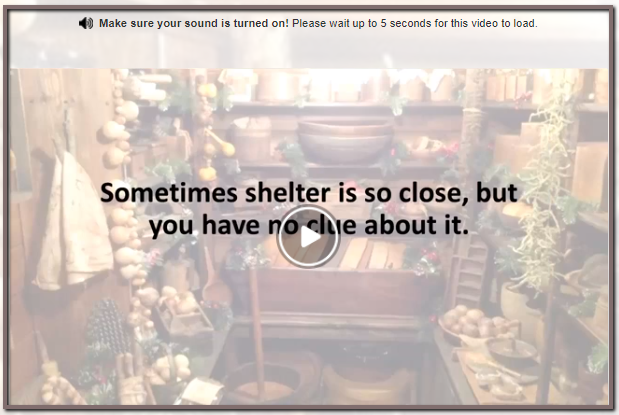
Shelter to Keep Out Heat
If you are in an extremely hot area, dig (not too deep) into the ground where it’s cooler. Also, lying on cool soil can help you not overheat. Then use leaves, bark, or whatever you can find to cover the sides, but make sure that cool air is still able to flow through.
Shelter to Keep Out Cold
This can be similar to a shelter to keep out the heat, but the key thing here is to remember insulation. So you don’t want to dig too deep into the ground, but you do want to use leaves, bark, and whatever you can to create the sides, making them thicker than you would if you were making a shelter to keep out heat. Also, you will want to add something to insulate the ground and not lay directly on the soil. Keep in mind that when building an insulated shelter, it should be just big enough for your body, as your body will be your main source of warmth.
#3: How to Start a Fire
First, you will need to create a tinder bundle. This can be a collection of natural items, such as dry grass/leaves, pine needles, wood, etc., but it can also be other materials, such as newspaper or cardboard pieces. Once you have enough dry materials to create your fire, you are going to need some way to ignite it. You’ll be okay if you have some matches or a lighter, but you may not have these resources, so it’s important to be aware of alternative ways of starting a fire:
- A magnesium fire starter: this handy little tool is used by the military and by many outdoor adventurers.
- A vehicle battery: if you know something about batteries, then you can use your battery from your car to help ignite a fire. All you need is something that will ignite (like steel wool) that you can attach to the positive and negative ends of the battery.
#4: How to Make a Spear/Find Food Sources
After you have found a water source, made a shelter, and created fire, you’re also going to need a way to get food. A small (or larger) spear can help you catch fish and/or wild game to eat. All you need is a long, straight stick that you can split one end of it with a stone, and then tie it into place.
The average human can go one to two weeks without food, but that can make it even harder to survive in an emergency. Depending on where you are, you will be able to find food sources nearby, such as nuts, seeds, berries, grains, and even insects. Other examples of edible plants you may be able to find are:
- Bamboo shoots
- Cactus
- Cattails
- Day lily
- Mint
- Thistle root
- Water lily roots
- Wild asparagus
- Wild carrot
- Wild onion
Other Things to Have
Car
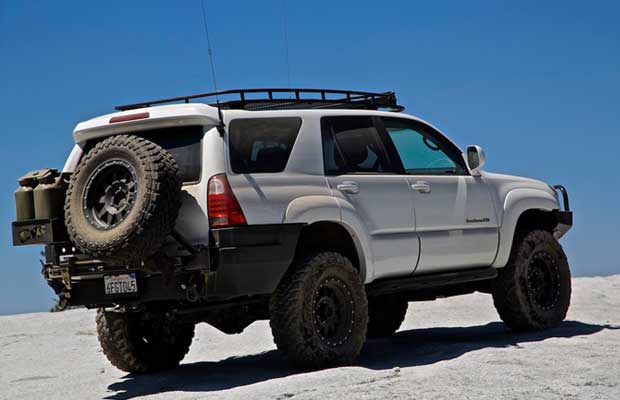
What is the best bug out vehicle for preppers?
Your car is an important piece of equipment to have, especially in a disaster situation. It can act as a form of shelter, store emergency equipment, and get you to and from certain areas. If you take good care of your car, it will take care of you when you need it the most. This includes getting routine maintenance on it now and having quality insurance.
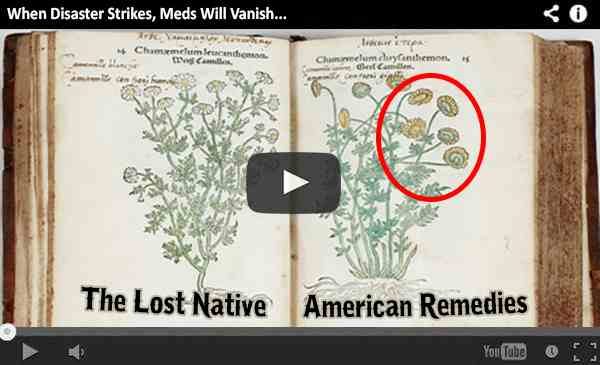
Cell Phone
We all have them, and they can be extremely necessary in times of trouble. Even though it’s likely that you may not always have a signal where you are, there may be times when you do. Also, if you can, carry an external charger/portable charger.
First Aid Kit
You can get by without a car or even a cell phone, but a first aid kit is a necessity. A simple first aid kit will contain all of the basics that you may need while you’re away from home. In addition to a first aid kit, you are going to know some basic first aid techniques too.
First Aid Kit Basics:
- Absorbent compress dressings
- Adhesive cloth and bandages
- Antibiotic ointment
- Antiseptic wipes
- Aspirin
- Blanket
- Breathing barrier
- Cold compress
- Gloves
- Gauze
- Thermometer
- Tweezers
First Aid Techniques:
- CPR (or hands-only CPR)
- Heimlich maneuver
- Making a tourniquet to stop excessive bleeding
- Set a splint for a broken bone/support for a strain
- Treating first and second degree burns; third-degree burns (numbness and whitening of the skin) should be treated by doctors.
Survival Kit
In addition to a first aid kit, it is also a good idea to have a wilderness survival kit. These are some things that you will need to help you out while you’re away from your home and/or civilization. Some good things to have in your wilderness survival kit would be:
- Butterfly sutures
- Candles
- Compass
- Fishing tools
- Knife
- Magnifying lense
- Matches
- Needle and thread
- Signaling mirror
Why is this knowledge important?
These kinds of things are good to know if you’re going on a camping trip or a nature hike, during times of natural disasters (e.g. hurricanes, floods, tornadoes, snowstorms/blizzards, ice storms, etc.), and any other type of possible unforeseen (or seen) natural (or manmade) disaster that could happen at any time. Hardly anyone wants to succumb to any of these types of disasters/emergencies, so it is important to know and understand what it takes to survive certain conditions and situations. Once all of your basic safety needs are met (water, food, shelter, and air), tools to stay safe, and the knowledge to put all of these things to use, then your chances of survival greatly increase.
One thing that many people may not realize is that remaining calm is the best way out of any type of emergency situation. Your knowledge, survival kits, and other tools will be worthless if you can’t remain calm in times of emergency. Our minds are a very powerful thing, and it can make or break a situation. Many individuals have made it out of very dire situations because they were able to focus and their will to survive helped them through it. So while you may be physically equipped to handle any type of emergency situation, being mentally prepared to do so is just as important, if not more.

Conclusion
The key thing to remember is to stay calm. Being highly prepared for any type of emergency situation, such as a natural or manmade disaster will help you feel more at ease and more likely to remain calm. Many of these same survival tips (such as CPR and the Heimlich maneuver) can help anyone out in everyday life as well, not just in the wilderness. All of this knowledge is something that everyone should at least be familiar with and could easily apply in emergencies.
source : Cornelia Adams

